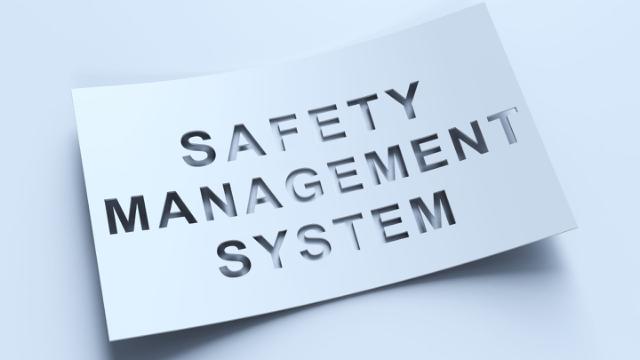
Safety Management:
Examining the Four Pillars of SMS
In recent years, Safety Management Systems have increasingly become the backbone of safety within the aviation industry. SMS plays a critical role in ensuring and maintaining the highest level of safety, efficiency, and compliance. But are you familiar with the four pillars of a functioning SMS?
Policy. Risk. Assurance. Promotion.
Four seemingly unrelated words. But when you put ‘Safety’ in front of them, they suddenly become paramount to developing and maintaining a successful Safety Management System.
This article discusses the four components of SMS and addresses why they are important for an organisation to proactively consider. Are you ready to dive into Safety Policy, Safety Risk Management, Safety Assurance, and Safety Promotion?
Safety Policy: We Are Committed to Safety
Safety Policies constitute the foundation of SMS. Essentially, a policy reflects management’s obligation to continually improve safety within the organisation. In the policy, you must define the methods, procedures, and structure required to achieve your organisation’s defined safety goals.
In addition, the safety policy establishes management’s commitment to making sure that SMS becomes an integral part of the company culture. Management can ensure this by communicating openly and transparently, including key personnel in the process, and implementing an easy-to-use reporting system.
The safety policy should elaborate on existing processes and procedures within your organisation to ease the implementation. Therefore, the policy must communicate clear objectives, responsibilities, and expectations in relation to safety performance.
In many organisations, SMS is subject to resistance and uncertainty. Why? Because management has miserably failed to convince the employees of the value of SMS. They have also failed to provide a clear structure, delegate responsibility, and execute clear communication where the employees feel included in the process.

Risk Management: Can We Accept the Risk?
The second pillar of SMS revolves around the management of risk. In aviation, risk is an inevitable companion, and many things can constitute a ‘risk’. That is where Safety Risk Management comes into play.
SRM, as it is often abbreviated, consists of the following elements: 1) Describe the system, 2) identify the hazards, 3) assess the risk, and 4) mitigate the risk.
This four-step formula enables organisations to assess the need for new procedures and determine the adequacy of existing procedures for managing risk.
Read more: Is Your SMS Reactive, Proactive, or Predictive?
Your organisation should, therefore, allocate the necessary resources to analyse data. These analyses will then lay the groundwork for a predictive SMS approach in which you can forecast potential risks and implement proactive measures to manage and tackle risk.
This mindset not only minimises the likelihood of safety-related incidents. It also builds confidence among your employees that your organisation is capable of managing risks. Safely and effectively.
Safety Assurance: Our System Can Manage Safety!
If your organisation is devoted to SMS, it is not enough to identify risks. A robust Safety Management System relies on continuous monitoring and evaluation. Safety Assurance is the third SMS pillar which inspires regular audits, inspections, and performance reviews. Through these measures, your organisation can ensure that your safety initiatives remain effective and reflect compliance with rules and regulations.
Employees are crucial to the safety assurance pillar, because they provide feedback and report hazards, risks, and incidents through your chosen reporting system. The more data you collect, the more you can use the data insights to improve your safety protocols and procedures to match the demands of reality.

Employees must have easy access to a user-friendly system in which they can report safety-related issues, hazards, risks, and incidents.
Safety Promotion: Safety Is a Joint Responsibility
If your organisation wants to succeed with SMS, you must make sure to promote safety as a joint effort and responsibility. Training in safety management, transparent communication, and other actions which include the employees in the process help inspire a positive safety culture on all levels of your organisation.
Read more: Employee Inputs Are Crucial to a Functioning SMS
From aircraft engineers to apprentices, administrative staff, and management. Everyone is an ambassador of safety. Therefore, you must make sure to foster a culture where safety permeates everything you do and say as an organisation.
So, how do you promote safety?
Your organisation can start by scheduling regular safety training. Launching internal campaigns about safety awareness. And introducing an easy-to-use reporting system where employees are not reprimanded or ridiculed for providing input.
These measures not only empower your employees to take ownership of safety. It also helps grow an organisational mindset where safety is a shared duty, priority, and concern.
Read more: How to Promote a Just Safety Culture





